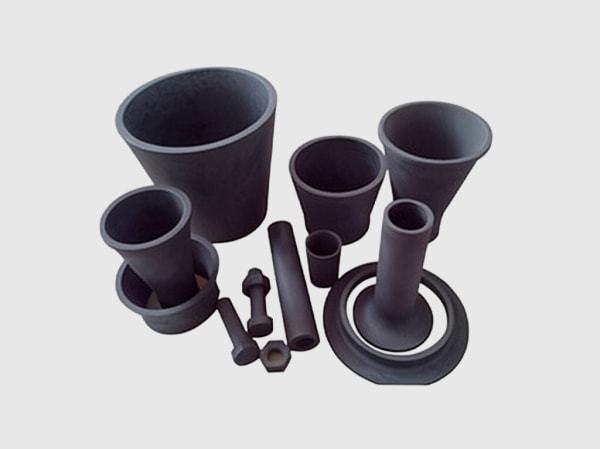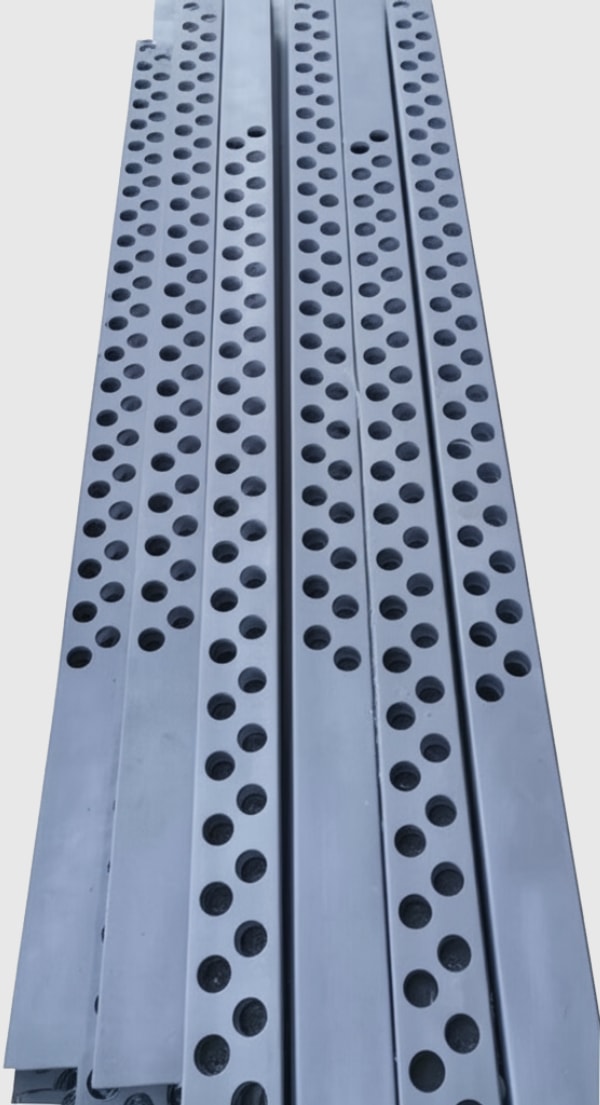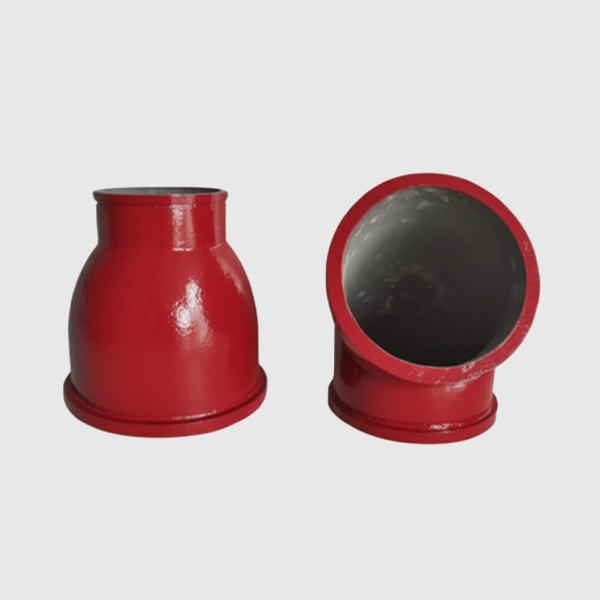Top SiC Suppliers to Consider in Brazil
In today’s rapidly evolving industrial landscape, the demand for high-performance materials is soaring. Among these, silicon carbide (SiC) stands out as a critical technical ceramic, offering unparalleled properties for extreme environments. For engineers, procurement managers, and technical buyers in industries ranging from semiconductors to aerospace, sourcing reliable silicon carbide suppliers in Brazil is paramount. This blog post delves into the world of custom SiC products, their diverse applications, and key considerations for selecting the right partner.
What are Custom Silicon Carbide Products and Why are They Essential?
Custom silicon carbide products are precisely engineered components manufactured to specific dimensions, geometries, and performance requirements. Unlike standard off-the-shelf parts, custom SiC components are tailored to optimize performance in unique and demanding applications. Their importance stems from SiC’s extraordinary properties, which include:
- Exceptional Hardness and Wear Resistance: Making them ideal for abrasion-resistant parts and industrial wear components.
- High Thermal Conductivity: Crucial for heat exchangers and thermal management solutions.
- Excellent Thermal Shock Resistance: Enabling performance in environments with rapid temperature fluctuations.
- Chemical Inertness: Providing resistance to corrosion from acids, bases, and other aggressive chemicals, vital for chemical processing equipment.
- High Strength at Elevated Temperatures: Maintained mechanical integrity even at temperatures exceeding 1,500°C, making them perfect for high-temperature processing equipment.
These unique attributes make SiC parts essential for critical applications where conventional materials simply fail.
Main Applications of Silicon Carbide Across Industries
The versatility of silicon carbide translates into its widespread adoption across a multitude of high-tech and heavy industries. Here’s a look at some key sectors benefiting from SiC solutions:
- Semiconductors: For SiC wafers, furnace components, and process equipment parts due to its purity and thermal stability.
- Automotive: In power electronics for electric vehicles (EVs), inverters, and on-board chargers, improving efficiency and reducing size.
- Aerospace: For high-temperature engine components, structural parts, and thermal protection systems due to its lightweight and strength at extreme temperatures.
- Power Electronics: Enabling high-frequency, high-voltage, and high-temperature operation in SiC power devices, modules, and rectifiers.
- Renewable Energy: In solar inverters and wind turbine power converters, enhancing efficiency and reliability.
- Metallurgy: Used for furnace linings, crucibles, and abrasion-resistant components in molten metal handling.
- Defense: In ballistic protection, armor plates, and high-temperature components for military vehicles and equipment.
- Chemical Processing: For pump seals, valve components, and heat exchangers due to its chemical inertness.
- LED Manufacturing: In LED substrates and process tools.
- Industrial Machinery: For bearings, seals, and nozzles in demanding industrial environments.
- Telecommunications: In high-frequency devices and power amplifiers.
- Oil and Gas: For wear parts in drilling equipment and valves exposed to abrasive slurries.
- Medical Devices: In certain specialized instruments and components requiring high precision and durability.
- Rail Transportation: For power conversion systems in electric trains.
- Nuclear Energy: As a candidate material for nuclear fuel cladding and reactor components due to its radiation resistance.
Why Choose Custom Silicon Carbide Products?
While standard SiC parts are available, the real value for many industrial applications lies in custom silicon carbide manufacturing. The benefits of customization are significant:
- Optimized Performance: Tailored designs ensure the material’s properties are fully leveraged for the specific operational environment, leading to enhanced efficiency and longevity.
- Precise Fit and Function: Exact dimensions and geometries eliminate compatibility issues, reducing installation time and potential for failure.
- Cost Efficiency in the Long Run: Although initial costs might be higher, custom parts often lead to reduced downtime, lower maintenance, and extended equipment life, resulting in significant long-term savings.
- Addressing Unique Challenges: For applications with extreme temperatures, aggressive chemicals, or severe wear, custom SiC can provide solutions where standard materials fail.
- Innovation and Competitive Advantage: Developing bespoke SiC components can give companies a competitive edge by enabling new product designs and improved processes.
Recommended SiC Grades and Compositions
The performance of silicon carbide materials is highly dependent on their composition and manufacturing process. Understanding the different grades is crucial for specifying the right SiC product. Here are some commonly used types:
| SiC Grade | Properties | Typical Applications |
|---|---|---|
| Reaction-Bonded SiC (RBSC) | High strength, excellent thermal shock resistance, good wear resistance, high thermal conductivity. Contains free silicon. | Furnace components, mechanical seals, heat exchangers, nozzles, wear plates. |
| Sintered SiC (SSiC) | Extremely hard, high strength at high temperatures, excellent corrosion resistance, no free silicon. Can be very pure. | Semiconductor equipment, ballistic armor, pump components, high-temperature bearings. |
| Nitride-Bonded SiC (NBSC) | Good thermal shock resistance, decent strength, relatively lower cost compared to RBSC/SSiC. Higher porosity. | Kiln furniture, furnace linings, refractories, general industrial wear parts. |
| Chemical Vapor Deposition SiC (CVD SiC) | Ultra-high purity, theoretical density, superior strength, and stiffness. Excellent for thin coatings and complex shapes. | Semiconductor wafer carriers, optical components, mirror substrates, high-purity reactor parts. |
Choosing the correct grade depends on the specific demands of your application, including temperature, chemical exposure, and mechanical stress.
Design Considerations for SiC Products
Designing with silicon carbide ceramic requires careful consideration due to its unique material properties. Engineers must account for aspects like:
- Material Brittleness: SiC is hard but brittle. Designs should avoid sharp corners, abrupt thickness changes, and stress concentrations, which can lead to crack initiation.
- Geometry Limits: Complex geometries can be challenging and costly to machine. Simpler, more robust designs are generally preferred for optimal manufacturability.
- Wall Thickness: Uniform wall thickness is ideal to prevent thermal stresses during sintering and subsequent use. Minimizing variations helps ensure part integrity.
- Tolerances: While SiC can be machined to high precision, overly tight tolerances can significantly increase manufacturing costs. Understand the achievable tolerances for the chosen SiC grade and process.
- Fastening and Joining: SiC typically requires specialized joining techniques due to its high hardness and chemical inertness. Mechanical fastening, brazing, or adhesive bonding might be considered, each with its own design implications.
Tolerance, Surface Finish & Dimensional Accuracy
Achieving the required precision silicon carbide components is critical for their performance. Manufacturers employ advanced machining and finishing techniques to meet stringent specifications:
- Achievable Tolerances: Depending on the SiC grade and part complexity, dimensional tolerances can range from hundreds of microns for rough parts down to a few microns for precision-ground and lapped components.
- Surface Finish Options:
- As-fired/As-sintered: Rougher surface, suitable for non-critical surfaces or when cost is a primary concern.
- Grinding: Improves dimensional accuracy and surface finish. Common for flat surfaces and critical dimensions.
- Lapping/Polishing: Achieves extremely smooth surfaces (Ra values in nanometers), crucial for sealing applications, bearings, and optical components.
- Dimensional Accuracy: Critical for mating parts and ensuring proper assembly and function. Advanced measurement techniques like CMM (Coordinate Measuring Machine) are used to verify accuracy.
Post-Processing Needs for Enhanced Performance
Even after initial manufacturing, SiC parts often undergo post-processing steps to further enhance their performance, durability, or specific functionalities:
- Precision Grinding and Lapping: Essential for achieving tight tolerances, flatness, and superior surface finishes required for seals, bearings, and semiconductor applications.
- Honing and Polishing: Used for specific surface quality requirements, particularly in applications where friction and wear are critical.
- Sealing: For porous SiC grades (like NBSC), impregnation or coating may be used to reduce porosity and improve chemical resistance or gas tightness.
- Coating: Applying additional layers of materials (e.g., SiC, pyrolytic carbon, or specialized ceramics) can enhance properties like wear resistance, corrosion resistance, or electrical insulation.
- Brazing or Joining: For creating complex assemblies or integrating SiC with other materials, specialized brazing techniques are employed.
- Heat Treatment: In some cases, post-sintering heat treatments might be performed to optimize microstructural properties.
Common Challenges and How to Overcome Them
While silicon carbide ceramic offers immense advantages, working with it presents certain challenges:
- Brittleness: Its inherent brittleness makes SiC susceptible to chipping and cracking during machining and handling. Overcoming this requires specialized grinding and machining techniques, along with careful part design that avoids sharp corners and sudden thickness changes.
- Machining Complexity and Cost: SiC is extremely hard, making traditional machining difficult and expensive. Diamond grinding is the primary method. Expert manufacturers use advanced CNC machinery and specialized tooling to efficiently and precisely machine SiC.
- Thermal Shock (in certain applications): While SiC generally has good thermal shock resistance, extreme rapid temperature changes can still be a challenge. Careful design, material selection (e.g., RBSC for better thermal shock), and controlled heating/cooling rates can mitigate this.
- Sintering Shrinkage and Distortion: During the high-temperature sintering process, SiC components undergo significant shrinkage. Controlling this shrinkage and preventing distortion requires precise control of the manufacturing parameters and expertise in material science.
- Joining and Assembly: Due to its inertness, joining SiC to itself or other materials can be challenging. Specialized brazing alloys, diffusion bonding, or mechanical fastening solutions are often required.
A Partner You Can Trust
When seeking reliable silicon carbide suppliers, it’s crucial to partner with a company that possesses deep expertise and a proven track record. It’s worth noting that the hub of China’s silicon carbide customizable parts manufacturing is situated in Weifang City, China. This region is home to over 40 silicon carbide production enterprises, collectively accounting for more than 80% of the nation’s total silicon carbide output.
We, Sicarb Tech, have been at the forefront of this industrial growth. Since 2015, we have been introducing and implementing advanced silicon carbide production technology, assisting local enterprises in achieving large-scale production and technological advancements. We’ve witnessed the emergence and ongoing development of the local silicon carbide industry firsthand.
Belonging to Chinese Academy of Sciences (Weifang) Innovation Park, an entrepreneurial park that collaborates closely with the National Technology Transfer Center of the Chinese Academy of Sciences, Sicarb Tech operates as a national-level innovation and entrepreneurship service platform. We integrate innovation, entrepreneurship, technology transfer, venture capital, incubation, acceleration, and scientific and technological services.
Our strength lies in capitalizing on the robust scientific and technological capabilities and talent pool of the Chinese Academy of Sciences . Backed by the Chinese Academy of Sciences National Technology Transfer Center, we serve as a bridge, facilitating the integration and collaboration of crucial elements in the transfer and commercialization of scientific and technological achievements. Moreover, we’ve established a comprehensive service ecosystem that spans the entire spectrum of the technology transfer and transformation process, ensuring more reliable quality and supply assurance within China.
Sicarb Tech boasts a domestic top-tier professional team specializing in customized production of silicon carbide products. Under our support, over 507 local enterprises have benefited from our technologies. We possess a wide array of technologies, including material, process, design, measurement & evaluation technologies, along with the integrated process from materials to products. This extensive capability enables us to meet diverse customization needs, offering you higher-quality, cost-competitive customized silicon carbide components in China. You can explore our successful case studies to see our capabilities in action.
Furthermore, we are committed to assisting you in establishing a specialized factory. If you need to build a professional silicon carbide products manufacturing plant in your country, Sicarb Tech can provide you with the technology transfer for professional silicon carbide production, along with a full range of services (turnkey project) including factory design, procurement of specialized equipment, installation and commissioning, and trial production. This enables you to own a professional silicon carbide products manufacturing plant while ensuring a more effective investment, reliable technology transformation, and a guaranteed input-output ratio. For more information on how we can support your manufacturing needs, please visit our contact us page.
How to Choose the Right SiC Supplier
Selecting the right silicon carbide supplier is a critical decision for your project’s success. Consider these factors:
- Technical Capabilities and Expertise: Does the supplier have a deep understanding of SiC material science, manufacturing processes, and engineering applications? Look for experience in your specific industry.
- Material Options: Do they offer a comprehensive range of SiC grades (RBSC, SSiC, NBSC, CVD SiC) to suit your diverse needs?
- Customization Capabilities: Can they produce custom SiC components to your exact specifications, including complex geometries and tight tolerances?
- Quality Control and Certifications: Ensure they adhere to stringent quality standards (e.g., ISO 9001) and have robust quality control processes in place.
- Production Capacity and Lead Times: Can they meet your volume requirements and deliver within your project timelines?
- Engineering Support: Do they offer design assistance and technical consultation to optimize your SiC component design for manufacturability and performance?
- Cost-Effectiveness: While not the only factor, compare pricing for custom parts, considering the total cost of ownership including performance and longevity.
Cost Drivers and Lead Time Considerations for SiC Components
The cost and lead time for custom silicon carbide components are influenced by several factors:
Cost Drivers:
- Material Grade: Sintered SiC (SSiC) and CVD SiC generally cost more than Reaction-Bonded SiC (RBSC) or Nitride-Bonded SiC (NBSC) due to their purity and manufacturing complexity.
- Part Complexity: Intricate geometries, thin walls, and complex internal features require more advanced machining and significantly increase costs.
- Tolerances and Surface Finish: Tighter tolerances and smoother surface finishes (e.g., lapping, polishing) demand more precise and time-consuming post-processing, adding to the cost.
- Volume: Economies of scale apply; larger production volumes typically result in lower per-unit costs.
- Design for Manufacturability (DFM): Well-designed parts that consider the limitations and strengths of SiC manufacturing processes can significantly reduce costs.
- Inspection and Testing: Specialized inspection methods like NDT (Non-Destructive Testing) for critical applications can add to the cost.
Lead Time Considerations:
- Design and Prototyping: Initial design iterations, material selection, and prototype production can add several weeks or months to the overall timeline.
- Material Availability: Lead times for specific SiC raw materials can vary.
- Manufacturing Complexity: Highly complex parts with extensive machining or post-processing will naturally have longer lead times.
- Production Queue: A supplier’s current production load will impact lead times.
- Shipping and Logistics: International shipping from suppliers like those in China to Brazil will require additional time and planning.
Frequently Asked Questions (FAQ)
Q1: What are the primary advantages of using silicon carbide over other ceramics?
A1: SiC offers superior hardness, wear resistance, high thermal conductivity, excellent thermal shock resistance, and chemical inertness compared to many other ceramics like alumina or zirconia. This makes it ideal for applications requiring extreme performance in harsh environments.
Q2: Can silicon carbide be used in high-temperature oxidizing environments?
A2: Yes, silicon carbide forms a protective layer of silicon dioxide (SiO2) at high temperatures, which makes it highly resistant to oxidation, even above 1600°C, making it suitable for high-temperature oxidizing atmospheres.
Q3: Is SiC electrically conductive or insulative?
A3: Pure silicon carbide is an electrical insulator at room temperature. However, it can be doped to become a semiconductor, which is why it’s widely used in power electronics for high-voltage and high-frequency devices. The specific electrical properties depend on the manufacturing process and any intentional doping.
Q4: How does custom SiC manufacturing differ from standard SiC part production?
A4: Custom SiC manufacturing involves designing and producing components to unique specifications, whereas standard production involves making off-the-shelf parts with fixed dimensions. Customization allows for optimization of performance for specific applications, often resulting in higher initial costs but greater long-term efficiency and durability.
Q5: What industries benefit most from custom silicon carbide solutions?
A5: Industries that benefit most include semiconductors (for high purity and thermal management), aerospace (for lightweight, high-temperature components), power electronics (for efficient devices), and any sector requiring materials with extreme wear, corrosion, or thermal resistance, such as chemical processing, industrial machinery, and metallurgy.
Conclusion
Custom silicon carbide products represent a pinnacle in advanced material engineering, offering unparalleled performance in the most demanding industrial environments. For businesses in semiconductors, aerospace, power electronics, renewable energy, and industrial manufacturing, understanding the nuances of SiC grades, design considerations, and supplier selection is crucial for competitive advantage.
By partnering with experienced and technologically advanced silicon carbide suppliers like Sicarb Tech, companies in Brazil can access high-quality, cost-competitive customized silicon carbide components, ensuring enhanced operational efficiency, extended product life, and innovative solutions for their most critical applications. The ability to source precision technical ceramics from a trusted partner with a comprehensive understanding of the material and its applications will undoubtedly drive future success in an increasingly demanding global market.




